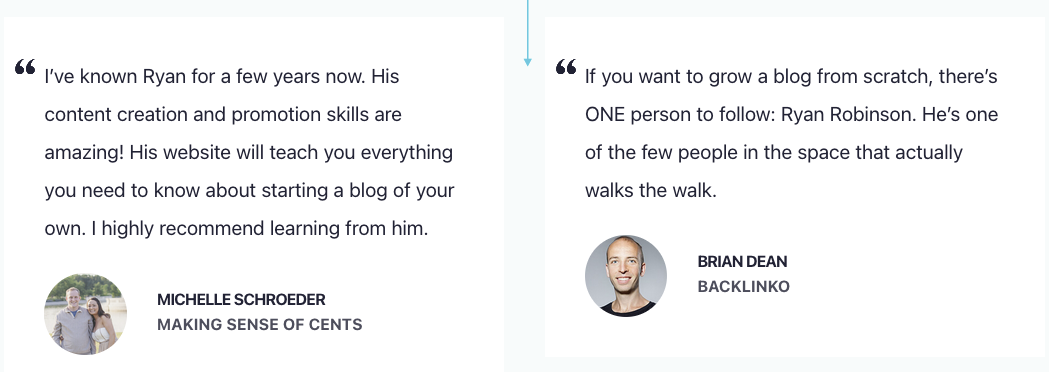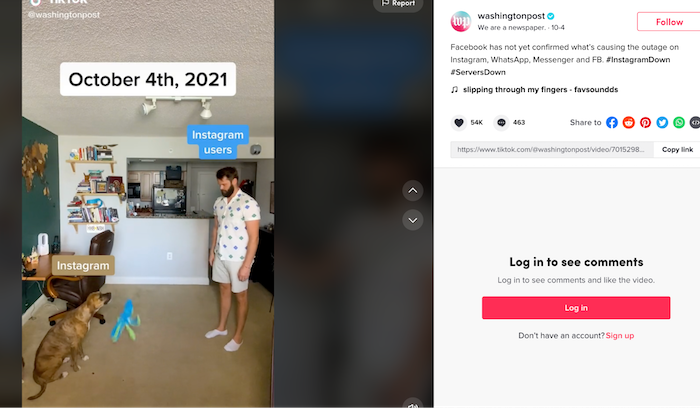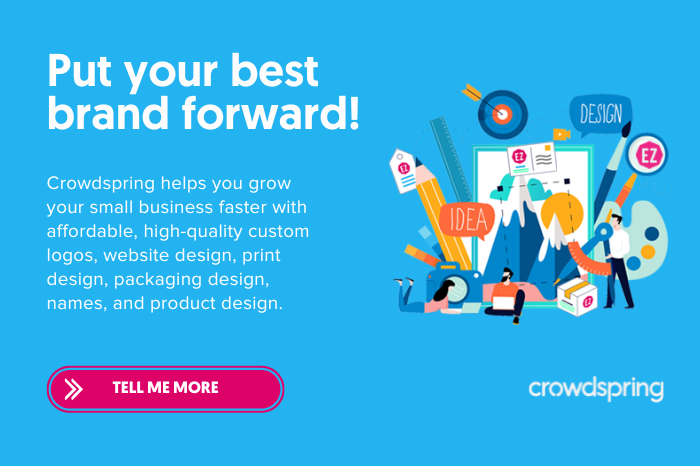How to start a blog that makes you money Anyone can start a blog that makes money. Seriously. Some of you can even generate enough money from your blog to quit your job. Don’t believe me? My blog gets over 2,436,100 visitors annually and generates more than one million dollars in revenue. Screenshot of Neilpatel.com's transaction volume statistics. Above is an example of a 30-day earning period from a previous year. I earned over $381,000 in one month that year! While you’re probably not going to reach that amount right now, I can teach you how to start a blog that makes over $3,000 per month. I started from scratch just like you. But after more than a decade of trial and error, I’ve finally figured out the secret to running a successful blog that makes money. You can avoid these mistakes and generate profits much quicker by following the blueprint outlined in this guide. Your 2-Minute Quick Start Cheat Sheet Looking for a barebones, quick start guide to get started as fast as possible? In this section, we won’t cover everything, only the essential steps. Everything is covered in way more detail later, so jump down if you hit a snag. Before you begin, it’s important to understand the principles behind starting a blog. Pick a big enough niche. Make sure to pick a niche that is bigger than “vegan Caribbean recipes” but smaller than “nutrition.” Don’t stick with one platform. I know I’ve told you that you need to use WordPress as your blogging platform, but it shouldn’t stop there. Why not also use Medium, Tumblr, or even LinkedIn? Control your destiny. Post in multiple places and always link back to your site so you can better control traffic to your site. Blogging is both about “you” and “I.” People want to read stories. They want to be involved in a conversation, and the easiest way to do this is to use the words “you” and “I” within your blog posts. Always ask questions. At the end of every blog post, always ask a question. If you don’t ask a question, people won’t know what to do next. You have to stand out. You have to go above and beyond. Sadly, there is no single answer as every industry is different, but typically, infographics, visuals, and branching off from everyone else in your space will help you stand out. Your content needs to be portable and easy to digest. For example, creating video-based content or audio-based content (podcasts) are simple ways to make your content portable. Content isn’t king unless it’s good. Writing mediocre content isn’t good enough. It won’t do well, and you will just be wasting time. So, don’t write content unless it is really, really, really good. You have to produce quality and quantity. To increase your odds of success, you need to be willing to produce amazing content in quantity. Your blog isn’t always the best place to blog. From industry blogs to large sites like Entrepreneur and Business Insider, consider placing your best content on places with more visibility and higher domain authority, especially in the beginning. Useful content beats viral content. Instead of focusing on creating viral content (when you have less than a 1% chance of producing it), focus on creating useful content. Useful content tends to be evergreen, which means it can generate steady traffic over time. It’s easier to build a personal blog than a corporate one. People connect with people more than they connect with corporate brands. A blog won’t work without a community. Blogging is about creating conversations. But without readers and community, there is no conversation. No man is an island. Make sure you respond to each and every comment. Not just on your blog, but even when people comment on your social profiles, make sure you respond back. People don’t read; they skim, so write your content with that in mind. From leveraging headings to even writing a conclusion at the end of each post, this will help your readers get value out of your content even when they don’t fully read it. It’s all about the headline. 8 out of 10 people will read your headline, but only 2 out of 10 will click through and read the rest. So focus on creating amazing headlines, or else you won’t get tons of traffic. Reveal your cards, all of them. When making a point and having something to back it up, make sure you do it early on in each blog post. It is a great way to hook your readers and get them to read the rest of your content. Consistency will make or break you. Don’t start a blog unless you are willing to be consistent. Not just for a few months or a year, but I am talking years (3 plus). Don’t ever rely on 1 traffic channel. You need to have an omnichannel approach in which you are leveraging all of the feasible channels out there that work for your niche. Don’t forget about Google. You should always write for humans and not search engines. But that doesn’t mean you should ignore Google. Be sure to include keyword research from Ubersuggest and blend them into your content. Understand not all content is meant to last forever. As your blog gets older, your responsibilities will grow. One of them is the willingness to kill some of your content. Not all of your content will be relevant a year or two from now. You can’t set it and forget it. As your content gets outdated, you’ll want to keep it fresh, or people will find that it’s useless and bounce away. People won’t come back to your blog unless you ask them to. No matter how good your content is, people won’t just come back unless you ask them to. The easiest way to do this is through emails and push notifications. Don’t wait too long to monetize. If you go years before trying to monetize, people will assume everything on your blog is free. Have multiple monetization strategies. Not only is it a safer strategy to have multiple monetization methods, but you’ll also make more money. Be willing to pay the price. If you want to succeed, you have to be willing to put in the time and energy. And if you can’t, then you have to be willing to put in money. If you don’t. then you won’t do well, no matter how brilliant of a writer or marketer you are. Now that you know the jist for starting a blog, it’s time to break it down into actionable steps so you can be on your way to making money. Here are the next steps to take: Unleash Ideas Within You Choose a Name For Your New Blog Get Web Hosting From Hostinger Get Familiar With WordPress Install a WordPress Theme Customize Your Blog Brainstorm Blog Topics Write Your First Masterpiece Create an Editorial Calendar Monetize Your Blog Step 1. Unleash Ideas Within You Stop. Don’t get overwhelmed about this whole thing. Just breathe. You got this. You don’t need to reinvent blogging to be successful. You just need to be specific about what you want to talk about. The best way to do that is to get inspired by someone you admire in the same niche or industry. Do they have a blog? If yes, read it. Then begin to let your ideas form. If you have no one specific, find someone you admire. Then let the ideas form. Take your unique experiences and speak about them in your voice. Use your vocabulary and personality, and don’t think about it too much. Let it flow. Your tribe will follow if you stay consistent. When it comes to choosing your blog’s niche, there are two key questions to ask yourself. 1. Do I Enjoy Learning About This Topic?
your blog and pass it along to others.
1. Use social proof to gain your audience’s trust
In 1984, Robert Cialdini wrote a book entitled Influence, which discussed a psychological phenomenon he called “social proof” or “informational social influence.”
Humans often emulate others, especially when they may not know how to act. If you’re invited to the White House or a celebrity event, you might look around at others who are more familiar with that scene and try to do what they’re doing.
This marketing psychology phenomenon has been used in marketing for some time, and it’s something that you can use as a blogger. It’s the definition of what an influencer is.
You trust an influencer because you believe they share things that make your life better in some way. You’re more willing to buy something from someone you trust- an expert in their field — and someone who can guide you into unfamiliar territory.
I thoughtfully use social proof in my Built to Blog course landing page. By highlighting what other respected industry leaders have to say about my course, I gain some credibility for my work and show potential students that I’m a respected figure in the blogging space.
I added a couple of snippets to my landing page that shows influential people in my niche sharing their thoughts about my blog.

Another example of social proof could be highlighting social shares at the top of your articles (I no longer do that on my site for speed & performance optimizations, but it can still work very well) or by showcasing the number of comments on an article.
2. Be human with your audience
As I discussed with storytelling, readers and viewers like it when they know the person behind a blog or business. That’s why you’ll see businesses opening social media accounts or companies with commercials that feature the owners in a personal way.
Video is a impactful way to humanize yourself for your audience, so I highly recommend pairing your written blog content with shorter-form videos that can add more context, depth, or even just a dose of entertainment to the subject at hand. My YouTube channel is an excellent example of how I’m putting this into practice today.
Remember that when you use different marketing and social channels to promote and build your brand, you must be sure that the way you showcase the brand on those channels is consistent. Your brand identity is important, but it will be recognizable and memorable only if consistent.
Humor can be another way to connect with your audience.
Remember when Wendy’s started roasting their competition and leaving snarky comments on their social media threads? It was a little risky but a move that panned out for them in the social media world.

The Washington Post uses a similar tactic with their TikTok account. On their TikTok, they talk about the news, but they also use TikTok trends and present the news in funny and absurd ways.
This content was so different from the traditional news style that many people wondered if it was a fake account pretending to be the Washington Post. However, it was smart to reach a new audience (a younger generation) and present the Washington Post as more than just a stuffy old newspaper.
Your About Page is another easy way to share who you are with your visitors. If they become interested in your content, they may want to know more about the person behind the writing. Your About Page can work for social proof and share personal details about who you are, what you do, and why you do it.
3. Focus on community to grow your blog
Community is everything. If your goal is to build a business around your blog, you’ll have to closely read your audience’s needs — which means staying in touch with them.
Learn where your audience spends their time online, whether in Facebook groups, on LinkedIn, Twitter, Instagram, Quora, or otherwise. Meeting them where they already feel comfortable is a significant first step towards building connections with them.
Only through honest conversations can you grow in your understanding of their needs and eventually work on win-win ways to monetize your blog with them.
Use an email list to build your community
You probably think of social media when you think about building a community. Social media is a great way to find and invest in your audience, but email is another important way.
Email gets less press than social media, but it’s more effective in many ways. People worldwide are more likely to use email than any social media platform. While there are over 2 billion people using Facebook, over 4 billion people reportedly used email in 2020. The number of email users is projected to rise in the coming years.
When you build an email list, you’re collecting a group of people who have shown an interest in what you do, and unlike social media, 100% of email subscribers will have a chance to see your content. Most (if not all) social media platforms significantly restrict the number of followers seeing your posts. You may have 1,000 followers on Instagram, with only 100 seeing your posts.
To attract people to your email list, put an email catcher prominently on your blog. I placed an email signup spot at the end of each post, at the top of my main page, and at the top of my About Me page. You can also use a popup that shows up when people come to your website. A popup can be slightly annoying, but it can also be effective.
To sweeten the deal, offer a freebie in exchange for an email subscription. A lead magnet can include templates, eBooks, plans, calendars, printables, and more.
How will you grow your blog?
Now that you’ve read through my best practices for growing a blog, which ones stood out to you? Which ones can you imagine putting into practice in the next few weeks, months, or years?
The most critical element in this equation is creating great content that resonates with your audience. The way you go about it — whether you use storytelling, humor, incredible graphics, videos, or whatever — is up to you and your talents and experience.
Try to give your audience something worth spending their time with, and don’t be afraid to go a little (or a lot) further than your competition while you do it.


Comments
Post a Comment